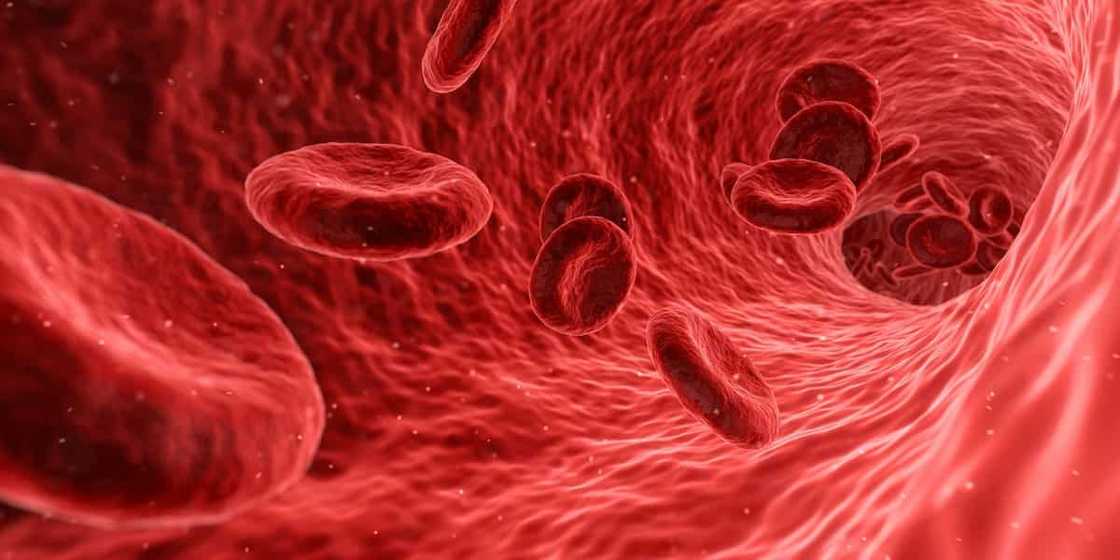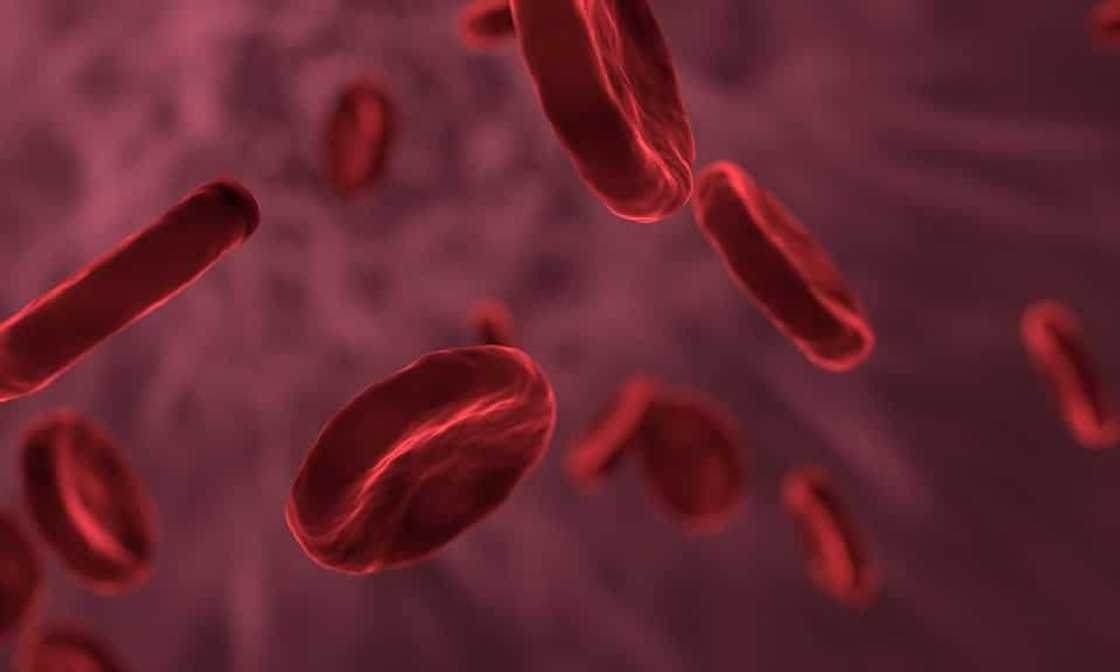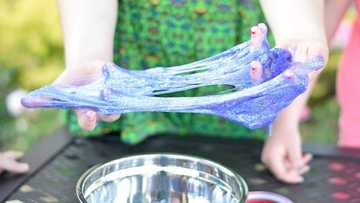Thick Blood: Reasons and What to Do
Thick blood has a negative impact on the body and is the cause of many potentially life-threatening diseases. It is therefore important to know the signs and understand the causes of the thickness in order to avoid complications. How can I normalize my own blood condition?

Source: UGC
Thick Blood: The Reasons
Everyone's health depends on the condition of the body's main fluid, blood. In normal conditions, it actively delivers oxygen. Hypercoagulation, or, in simple terms, thick blood, is a condition of excessive viscosity. Problems in the clotting process delay the delivery of nutrients. This disrupts the work of internal organs.
If you suspect you may have thick blood, symptoms will help to sort things out. Here they are:
- vision loss;
- slight bruising;
- High blood pressure;
- lack of energy;
- anemia;
- Confused breathing.
The scientific approach proves that hyper-coagulation can be inherited or developed for other reasons. Symptoms of thick blood can also be determined by the presence of various health problems. Here is what could cause:
- Serious diseases.
Blood cancer causes the bone marrow to produce too many red blood cells or white blood cells, leading to thickening. SCC, or lupus, which is an inflammatory disease, is also a factor in blood clots. Genetic mutation factor V Leiden. If the blood factor is too active, it causes the clot.
- C and S. protein deficiencies
Why the thick blood? It's a lack of protein. As a result, people are susceptible to increased thrombosis and blood clots at a young age.
- Mutation in the prothrombin gene 20210A.
Simply put, prothrombin allows blood to clot, but if it exceeds its dose in the body, the body, on the contrary, is prone to blood clots.
Why the thick blood and what is it threatening? The problem can lead to excessive thrombosis, heart attack or stroke. More information about thrombophlebitis is described in a paper in The British Medical Journal. In addition to diseases, hypercoagulation is caused by the following factors:
- Dehydration. When the body's water is insufficient, it takes the fluid from the vessels.
- Bed mode or lack of activity. In such cases, the blood flow is disrupted, causing a blockage and blood clots.
- Stress. That's where the blood is thick. Stress hormones narrow the blood vessels and slow down blood circulation.
- Pregnancy. Compression of pelvic veins during fetal growth is also a cause of thrombosis and blood congestion.
- Poor diet, smoking, alcohol abuse. Substances produced in the body for these reasons cause blood to clot.

Source: UGC
What makes the blood thicken? Additional reasons are frequent use of:
- Walnuts;
- white grapes;
- Pork;
- fat;
- buckwheat;
- radishes;
- grenade;
- white bread;
- bananas.
To improve the situation and be able to dilute blood, certain recommendations should be followed.
Thick blood: what to do?
How can you make your blood thinner at home without worrying about your health? To start, you need to determine exactly what you have.
How do you tell if the blood is thick? Reliable methods are based on practical experience, so I recommend a diagnostic examination at a clinic. This includes the following analyses:
- Hematocrit and a general blood test. They allow you to determine blood hemoglobin levels and total blood volume.
- Coagulogram. Allows to determine the level of blood clotting.
- APPT. It detects levels of plasma, inhibitors, and other substances in the blood.
If there are signs of thick blood, and the suspicions are confirmed by tests, you can choose medication or use home methods. My colleagues at Heidelberg University Hospital argue that thick blood not only leads to heart attacks, but also prevents them. This paradox has been proven experimentally in mice.
Increased blood density in animals is determined by the large size of plaques in the blood vessels. They are thought to be more stable and less at risk of rupturing and causing a disruption in circulation.
Therefore, before starting treatment, one must understand the causes of blood clots and the complexity of an existing problem.
Here's what you can do yourself:
- give up smoking and alcohol;
- switch to a healthy diet;
- reduce stress levels;
- drink 10 to 12 glasses of water a day.
If you have a thick blood, foods that are high in protein, amino acids, and fat should be included. These include fish, lean meats, olive oil and linseed oil.
There are also blood thinners. These are garlic, beets, tomatoes, strawberries, citrus fruits, apples, peaches, dark chocolate, almond. I have personally witnessed how changing diets and controlling vitamin balances work wonders. With high viscosity, it is important that the daily vitamin C and K intake is not exceeded. Be sure to add foods that include vitamin E.
Without going into medicine and folk methods, a sensible approach can be taken to reduce blood clots. In my work, I saw how simple methods help not only to thin blood, but also improve the immune system and the overall state of the body. Sport, healthy eating, and plenty of water should be on your schedule. It can be obtained not only from the tap, but also by:
- tea, milk, juice;
- fruit and vegetables.
The latter provide not only moisture, but also fiber and vitamins. Dry blood is a problem that can be addressed by a healthy lifestyle. And if you do decide to seek medication, it is important to consult your doctor.
According to experts, thick blood is dangerous for human health and life, because it can lead to heart attacks and strokes. As you can see, there is a refutation of the known facts. But if you feel sick, be sure to stick to healthy lifestyles and reap the benefits.
Attention! The material is only informative. The treatments described in this article should not be used without prior consultation with a doctor.
Sources:
- What is polycythemia vera?// https://www.webmd.com/cancer/polycythemia-vera#1
- Is blood like your waistline - the thinner, the better?// https://www.health.harvard.edu/newsletter_article/is-blood-like-your-waistline-the-thinner-the-better
- Why 'Thick' Blood Protects From A Heart Attack//
- Superficial thrombophlebitis (superficial venous thrombosis)//https://www.bmj.com/content/350/bmj.h2039.full
Author: Anna Ivanovna Tikhomirova, Candidate of Medical Sciences
Reviewer: Candidate of Medical Sciences, Professor Ivan Georgievich Maksakov
Source: KAMI.com.gh






